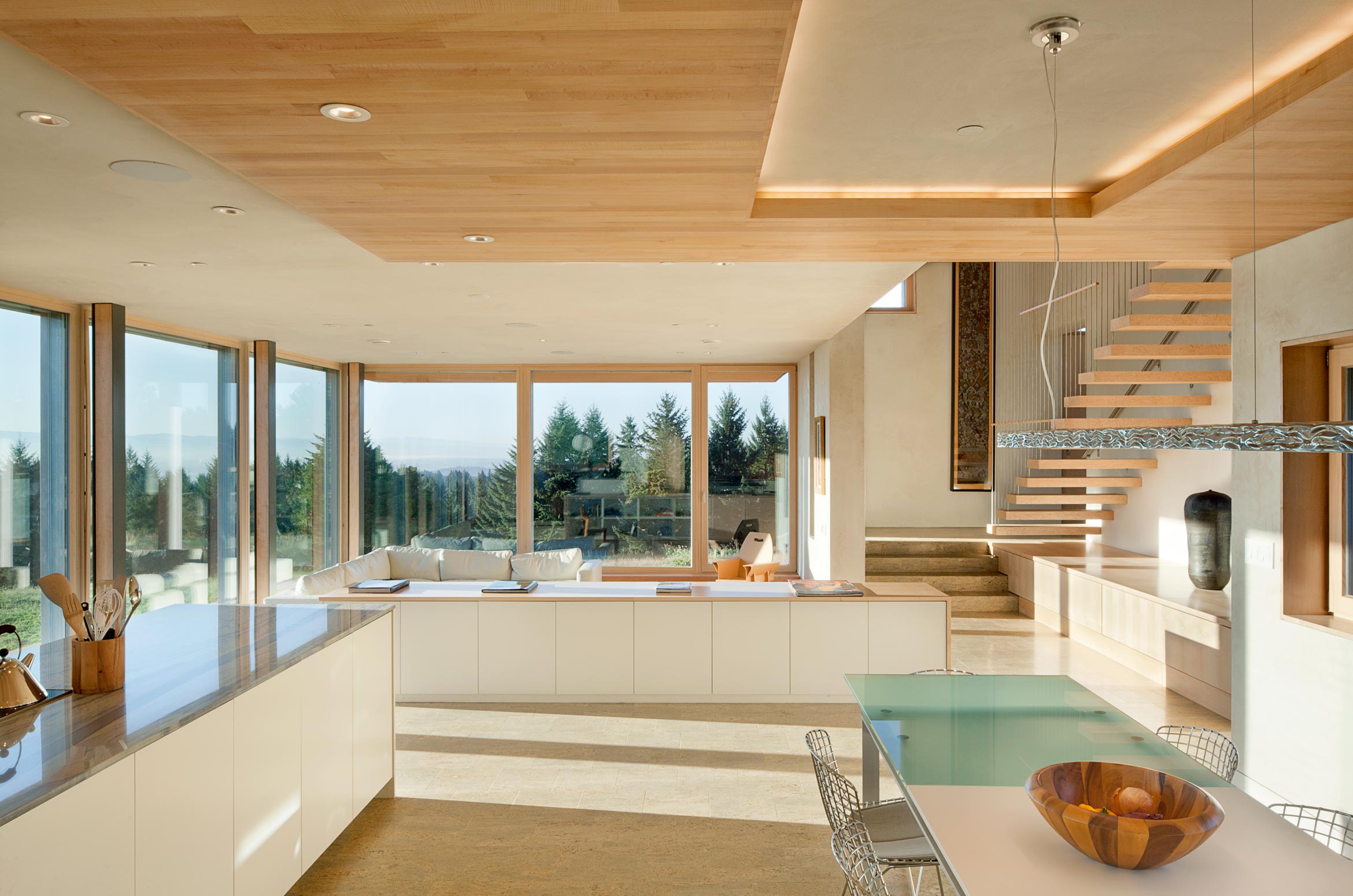Some resources to consider when your client cares about their environment and ours.
Passive House and LEED Platinum certified by Holst Architecture and Hammer & Hand.
How often are Architects approached by their clients and potential clients with their desires to create modern designs for their buildings, particularly with plenty of large floor to ceiling windows, on a budget. Liminal offers a quick guide to assisting future modern home and business owners and their architects in how to marry their budgets with beautiful buildings. The short answer is architecture using LEED standards and passive house principles. Herebelow, is the slightly longer answer.
1
INSPIRE
There are a multitude of ways to inspire clients to think about sustainable architecture and building for the sake of the environment. Liminal has found that utilizing rich photographic images of modernly designed properties is a great beginning. Perhaps, in this stage of the process, the words environment, health, sustainability, passive, etc, do not have a place in the dialogue. This stage is about collaborating on an agreeable aesthetic and getting to know their taste. However, when creating the look-book for your clients, why not consider consolidating your pictures to those which are strictly from Passive House, LEED certified buildings. One great resource for locating these types of photos is HOUZZ, and they have a great collection of just this sort of thing | HERE |.
2
INFORM
Your clients have identified their design tastes and their budget, which don't equate mathematically. Perhaps, now, the architect can begin to review options and alternative or simply make an argument that using Passive House design principles may make their ideal property more feasible than what their budget may be indicating. The higher costs of these building will provide a long-term financial gain, particularly when utilizing solar panels and materials that better insulate and designs that minimize thermal bridging. In the design phase, the architect may begin to consider alternative and more environmentally friendly and energy efficient materials (see BUILD, below) and how they will be incorporated into the construction of the actual structure. Here are a few resources to share with your clients which speak about the affordability of environmentally positive architecture
3
DESIGN+BUILD
Now it is time to construct the architecture and here are some quick links to building materials which tend to be produce more energy efficient results as well as improved environmental benefits.
- Photovoltaics and Architecture
- Ramned Earth
- Regionally manufactured materials
- Windows
- PHIUS Windows Information
4
GREEN
This property designed by Holst Architecture is an award-winning example of the benefits of combining the beauty of modern architecture with environmental design principles. Remember to consider the benefits of these environmentally positive measures
- Sustainability. A Passive House building requires as little as 10 percent of the energy used by typical buildings. Passive House structures do not require heating and cooling systems on conventional scales, meaning that the money that would have gone towards larger heating and cooling systems can be spent instead on better windows, thicker insulation and a ventilation system.
- Affordability. Passive Houses not only save money over the long term, especially in light of rising energy costs, but are surprisingly affordable to begin with. The investment in higher quality building components required by the Passive House standard is mitigated by the elimination of expensive heating and cooling systems.
- Comfort. An extremely well insulated building envelope as well as triple glazed windows and insulated frames keep the desired warmth or lack thereof inside. This means that the floor and all interior walls stay at the same pleasant temperature. Even the fresh air supplied to Passive Houses is brought to a pleasant temperature before it enters the house. The ventilation systems in Passive Houses consistently supply fresh air, making for superior indoor air quality and these systems provide plentiful fresh, pollen-free and dust-free air which maximizes comfort, especially for those with allergies or respiratory problems. Additionally, temperatures and ventilation prevent moisture build up limiting condensation and other factors which contribute to mold growth.
- Versatility. The Passive House Standard is also increasingly being used in retrofits as well as for non-residential buildings such as schools, administrative buildings, manufacturing plants and hotels. Generally, these standards and principles can be applied to all forms of architecture and design.



